
Browse an alphabetical list of photographs. These historical images portray people, places, and events before, during, and after World War II and the Holocaust.
<< Previous | Displaying results 26-50 of 56 for "Photo" | Next >>
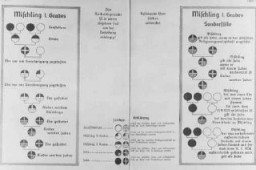
Nazi propaganda depicting two racial portraits of individuals considered non-Aryan. The original caption reads: "Then these are barely recognizable as human beings." Circa 1933–1943.
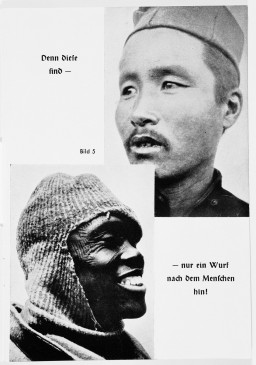
Nazi Storm Troopers (SA) block the entrance to a trade union building that they have occupied. SA detachments occupied union offices nationwide, forcing the dissolution of the unions. Berlin, Germany, May 2, 1933.
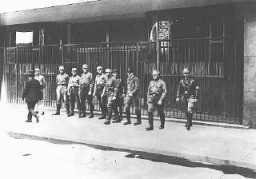
Members of the SA enter Danzig in 1939. Germany annexed most of western Poland and Danzig within weeks of the German invasion of Poland.
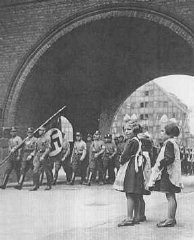
Nazis block Jews from entering the University of Vienna. Austria, 1938.
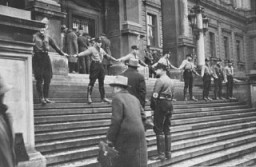
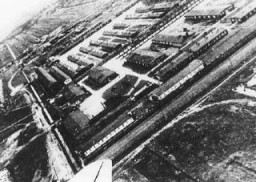
British Prime Minister Neville Chamberlain addresses a crowd at the Heston Aerodrome on September 30, 1938. He has just returned from signing the Munich Agreement with Germany, Italy, and France. Chamberlain will later deliver a statement at the prime minister’s residence at 10 Downing Street, where he famously proclaims, “I believe it is peace for our time.” IWM (HU 4255)
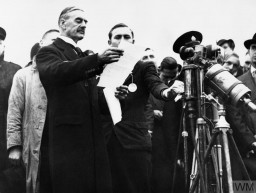
Front page of a newspaper from Landsberg displaced persons camp. Germany, November 15, 1945.
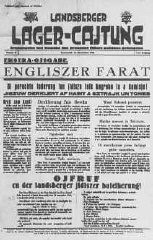
An American correspondent reads a special edition of the Nürnberger newspaper reporting the sentences handed down by the International Military Tribunal. Nuremberg, Germany, October 1, 1946.
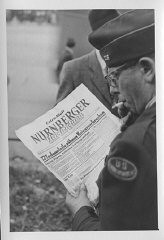
A family of nomadic Roma (Gypsies) in front of their wagon. Czechoslovakia, 1939.
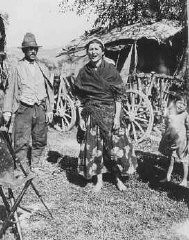
Norbert Yasharoff, a Bulgarian Jew, wearing the compulsory star of David. His young sister was not then required to wear a star. Pleven, Bulgaria, between May and September 1943.
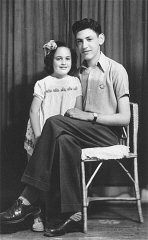
Norman and Amalie Salsitz with their first grandchild, Dustin. March 11, 1983. With the end of World War II and collapse of the Nazi regime, survivors of the Holocaust faced the daunting task of rebuilding their lives. With little in the way of financial resources and few, if any, surviving family members, most eventually emigrated from Europe to start their lives again. Between 1945 and 1952, more than 80,000 Holocaust survivors immigrated to the United States. Norman was one of them.
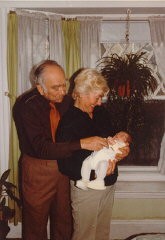
Norman Salsitz and Amalie Petranka shortly after they met (under their assumed identities of, respectively, Felicja Milaszewska and Tadeusz Zaleski). Krakow, Poland, March 15, 1945. With the end of World War II and collapse of the Nazi regime, survivors of the Holocaust faced the daunting task of rebuilding their lives. With little in the way of financial resources and few, if any, surviving family members, most eventually emigrated from Europe to start their lives again. Between 1945 and 1952, more than…
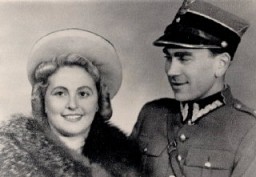
Norman Salsitz holds a photograph of himself and Amalie from 1945. 2004. With the end of World War II and collapse of the Nazi regime, survivors of the Holocaust faced the daunting task of rebuilding their lives. With little in the way of financial resources and few, if any, surviving family members, most eventually emigrated from Europe to start their lives again. Between 1945 and 1952, more than 80,000 Holocaust survivors immigrated to the United States. Norman was one of them.
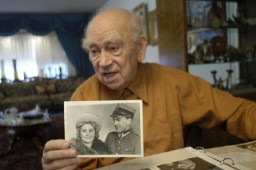
Norman Salsitz holds a photograph of his wife, Amalie, and daughter, Esther. 2004. With the end of World War II and collapse of the Nazi regime, survivors of the Holocaust faced the daunting task of rebuilding their lives. With little in the way of financial resources and few, if any, surviving family members, most eventually emigrated from Europe to start their lives again. Between 1945 and 1952, more than 80,000 Holocaust survivors immigrated to the United States. Norman was one of them.
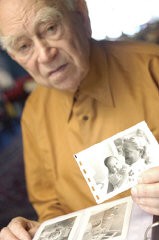
Norman (with camera) in the United States. August 1948. With the end of World War II and collapse of the Nazi regime, survivors of the Holocaust faced the daunting task of rebuilding their lives. With little in the way of financial resources and few, if any, surviving family members, most eventually emigrated from Europe to start their lives again. Between 1945 and 1952, more than 80,000 Holocaust survivors immigrated to the United States. Norman was one of them.
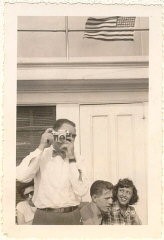
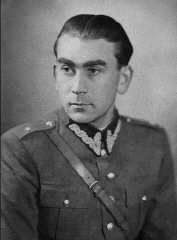
Norman Salsitz looks through his prewar family photographs. 2004. With the end of World War II and collapse of the Nazi regime, survivors of the Holocaust faced the daunting task of rebuilding their lives. With little in the way of financial resources and few, if any, surviving family members, most eventually emigrated from Europe to start their lives again. Between 1945 and 1952, more than 80,000 Holocaust survivors immigrated to the United States. Norman was one of them.
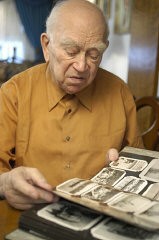
Norman Salsitz while under the assumed identity Tadeusz Zaleski. Legnica, Poland, 1945.
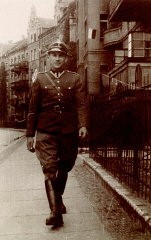
This 1929 portrait shows Norman Salsitz with his niece, Szandla Weinstein. Picture taken in front of a photographer's backdrop in the Kolbuszowa marketplace.
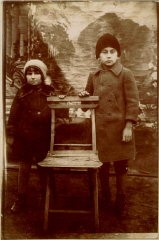
This 1925 photograph taken in Kolbuszowa, Poland, shows Norman Salsitz (at right) with his sister Rachel (left) and brother David (center). With the end of World War II and collapse of the Nazi regime, survivors of the Holocaust faced the daunting task of rebuilding their lives. With little in the way of financial resources and few, if any, surviving family members, most eventually emigrated from Europe to start their lives again. Between 1945 and 1952, more than 80,000 Holocaust survivors immigrated to…
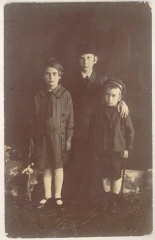
Norman's daughter, Esther, at age one. April 1957. With the end of World War II and collapse of the Nazi regime, survivors of the Holocaust faced the daunting task of rebuilding their lives. With little in the way of financial resources and few, if any, surviving family members, most eventually emigrated from Europe to start their lives again. Between 1945 and 1952, more than 80,000 Holocaust survivors immigrated to the United States. Norman was one of them.

Norman's grandchildren, Dustin, Aaron, and Michael. September 30, 1993. With the end of World War II and collapse of the Nazi regime, survivors of the Holocaust faced the daunting task of rebuilding their lives. With little in the way of financial resources and few, if any, surviving family members, most eventually emigrated from Europe to start their lives again. Between 1945 and 1952, more than 80,000 Holocaust survivors immigrated to the United States. Norman was one of them.
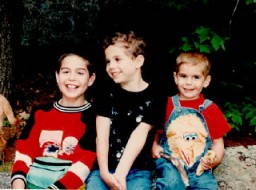
Norman's grandchildren, Michael, Dustin, and Aaron in 1997. With the end of World War II and collapse of the Nazi regime, survivors of the Holocaust faced the daunting task of rebuilding their lives. With little in the way of financial resources and few, if any, surviving family members, most eventually emigrated from Europe to start their lives again. Between 1945 and 1952, more than 80,000 Holocaust survivors immigrated to the United States. Norman was one of them.
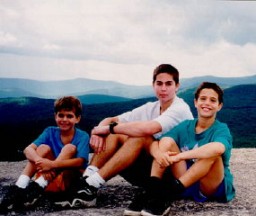
Prewar portrait of Norman's parents, Isak and Ester, taken in Kolbuszowa, Poland, in 1934 when Isak's brother visited from America. Isak's six siblings all emigrated to America. Isak and Esther, who remained in Kolbuszowa, both perished during the Holocaust: Isak was killed in the Kolbuszowa ghetto on April 28, 1942, and Esther was killed in the Belzec killing center in July 1942. With the end of World War II and collapse of the Nazi regime, survivors of the Holocaust faced the daunting task of…
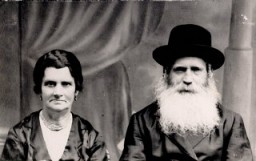
We would like to thank Crown Family Philanthropies, Abe and Ida Cooper Foundation, the Claims Conference, EVZ, and BMF for supporting the ongoing work to create content and resources for the Holocaust Encyclopedia. View the list of donor acknowledgement.